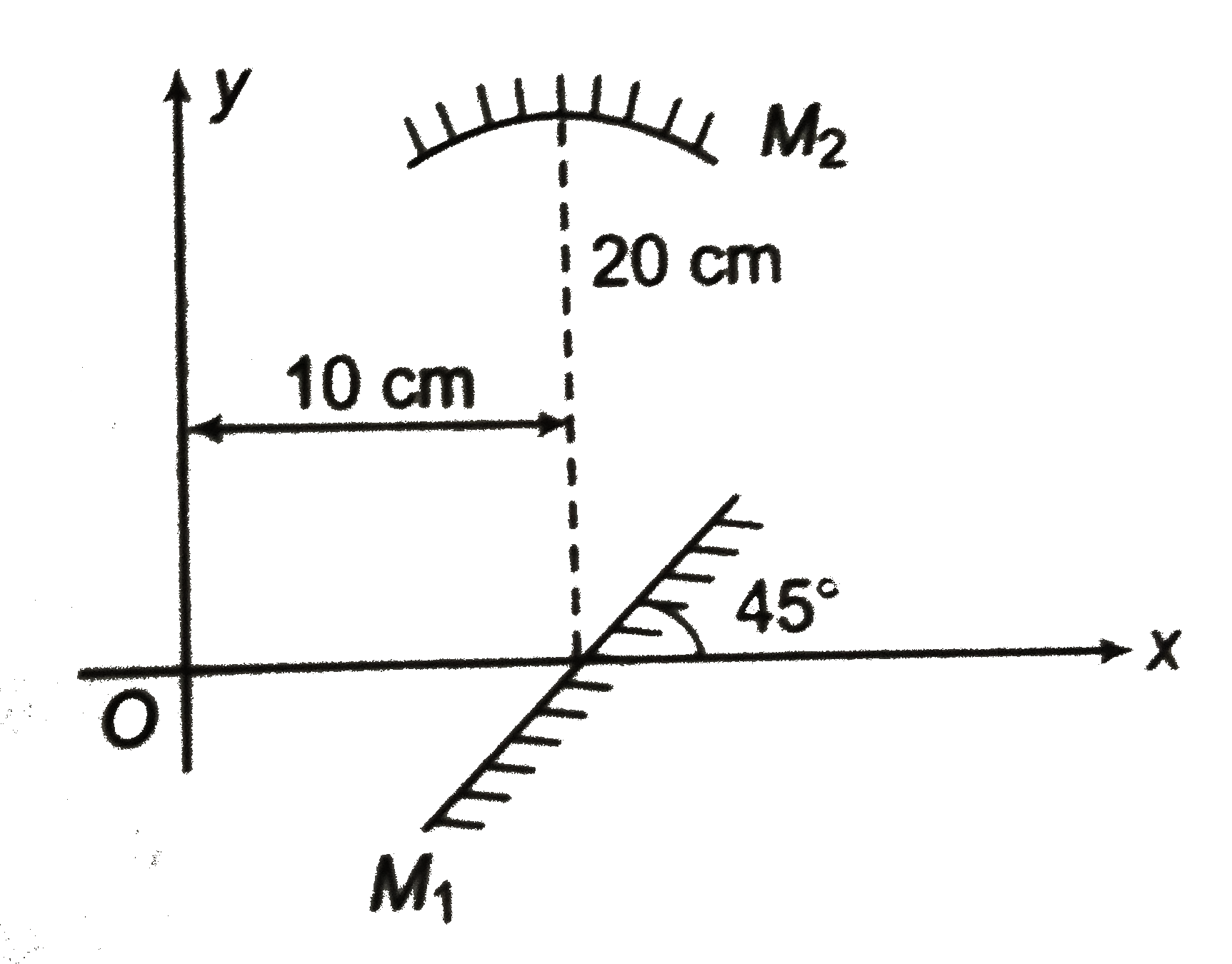In a reflecting astronomical telescope, if the objetcive (a spherical mirror) is replaced by a parabolic mirror of the same focal length and aperture, then
the final image will be erect
a large image will be obtained
the telescope will gather more light
spherical aberration will be absent
The correct Answer is:D
To solve this question, we need to analyze the effects of replacing the objective spherical mirror of a reflecting astronomical telescope with a parabolic mirror of the same focal length and aperture. Let's break down the solution step by step.
Step 1: Understanding the Telescope Configuration
In a reflecting astronomical telescope, the objective mirror is responsible for gathering light from distant objects and forming an image. The original configuration uses a spherical mirror, which can introduce spherical aberration.
Hint: Recall the basic structure of a reflecting telescope and the role of the objective mirror.
Step 2: Identifying Spherical Aberration
Spherical aberration occurs when light rays that strike the mirror near its edge do not converge at the same focal point as those that strike closer to the center. This can lead to a blurred image.
Hint: Consider how the shape of the mirror affects the convergence of light rays.
Step 3: Benefits of a Parabolic Mirror
A parabolic mirror, unlike a spherical mirror, focuses all incoming parallel rays (from distant objects) to a single focal point. This eliminates spherical aberration, leading to a clearer and sharper image.
Hint: Think about the geometric properties of parabolic mirrors and how they differ from spherical mirrors.
Step 4: Implications of Using a Parabolic Mirror
By replacing the spherical mirror with a parabolic mirror of the same focal length and aperture, we can conclude the following:
- Spherical aberration will be absent.
- The telescope will gather light more effectively, potentially leading to a larger and clearer image.
Hint: Reflect on how the absence of spherical aberration improves image quality.
Step 5: Conclusion
Based on the analysis, the most significant change when replacing the spherical mirror with a parabolic mirror is that spherical aberration will be absent. This leads to improved image quality and light gathering capability.
Final Answer: Spherical aberration will be absent.
In a reflecting astronomical telescope, the objective mirror is responsible for gathering light from distant objects and forming an image. The original configuration uses a spherical mirror, which can introduce spherical aberration.
Spherical aberration occurs when light rays that strike the mirror near its edge do not converge at the same focal point as those that strike closer to the center. This can lead to a blurred image.
A parabolic mirror, unlike a spherical mirror, focuses all incoming parallel rays (from distant objects) to a single focal point. This eliminates spherical aberration, leading to a clearer and sharper image.
By replacing the spherical mirror with a parabolic mirror of the same focal length and aperture, we can conclude the following:
- Spherical aberration will be absent.
- The telescope will gather light more effectively, potentially leading to a larger and clearer image.
Based on the analysis, the most significant change when replacing the spherical mirror with a parabolic mirror is that spherical aberration will be absent. This leads to improved image quality and light gathering capability.
Topper's Solved these Questions
- BOOK - NCERT FINGERTPS ENGLISHCHAPTER - PRACTICE PAPPEREXERCISE - Practice Paper 150videos
PRACTICE PAPPER
- BOOK - NCERT FINGERTPS ENGLISHCHAPTER - PRACTICE PAPPEREXERCISE - Practice Paper 250videos
PRACTICE PAPPER
- BOOK - NCERT FINGERTPS ENGLISHCHAPTER - PRACTICE PAPPEREXERCISE - Practice Papper 250videos
PRACTICE PAPPER
- BOOK - NCERT FINGERTPS ENGLISHCHAPTER - NUCLEIEXERCISE - Assertion And Reason15videos
NUCLEI
- BOOK - NCERT FINGERTPS ENGLISHCHAPTER - RAY OPTICS AND OPTICAL INSTRUMENTSEXERCISE - NCERT Exemplar11videos
RAY OPTICS AND OPTICAL INSTRUMENTS
Similar Questions
What is a spherical mirror?
View SolutionThe geometrical centre of a spherical mirror
View SolutionHow is the focal length of a spherical mirror related to its radius of curvature?
View SolutionThe radius of curvature of a spherical mirror is 20 cm. What is its focal length?
View SolutionThe distance of an object from a concave spherical mirror is equal to the focal length of the mirror. Then the image.
View SolutionFor a plane mirror what is the focal length? The magnification?
View SolutionFor a concave mirror of focal length 20 cm, match the following
 View Solution
View SolutionFrom a concave mirror of focal length 20 cm. match the following:
 View Solution
View SolutionA plane mirror (M1) and a concave mirror (M2) of focal length 10 cm are arranged as shown in figure. An object is kept at origin. Answers the following questions. (consider image formed by single reflection in all cases).

If concave mirror is replaced by convex mirror of same focal length then coordinates of image formed by (M2) will beView SolutionFocal length of a concave mirror is
View Solution

